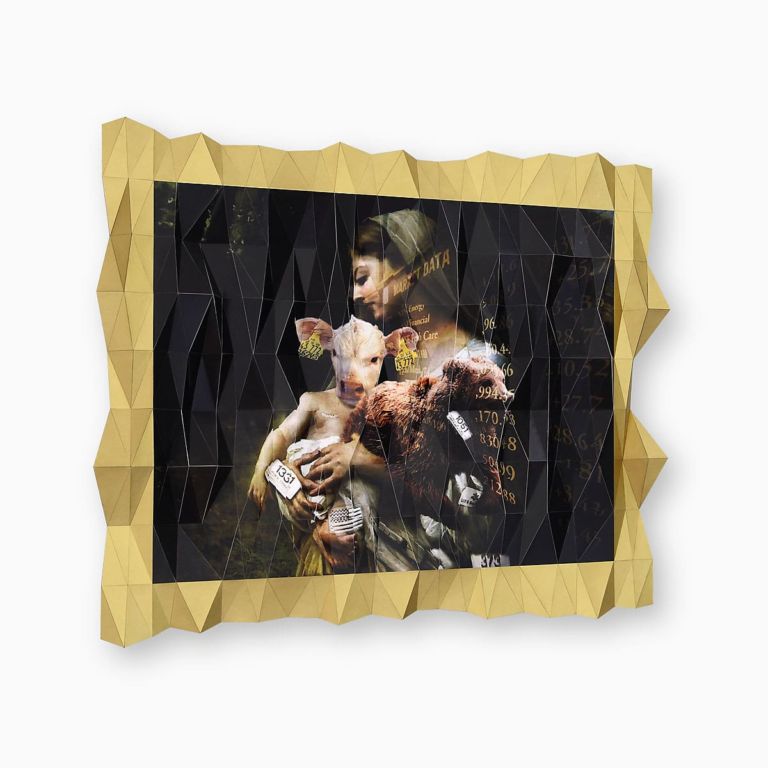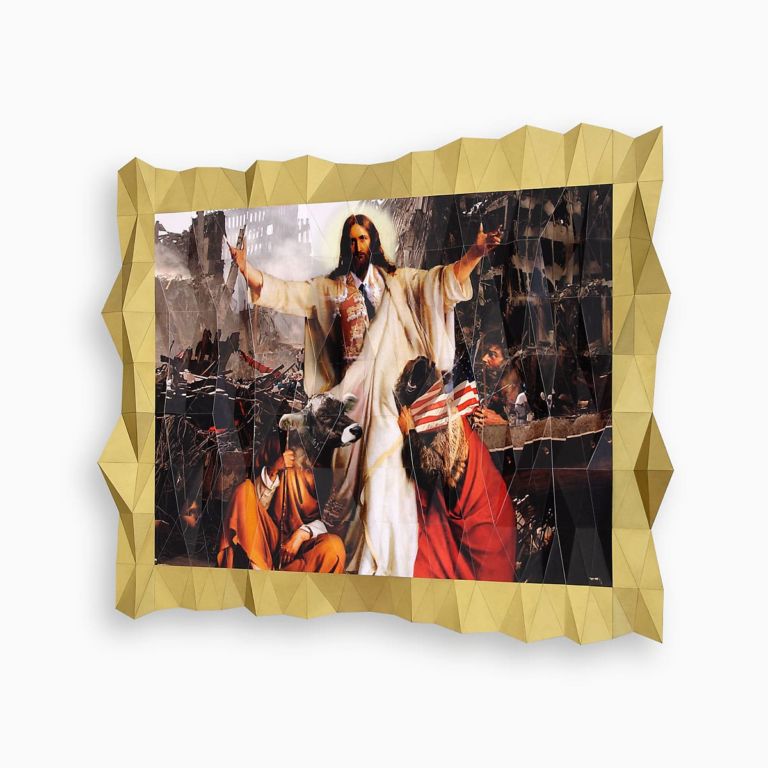The Bulls, the Bears and the Farm
2010
Pigment print on Hahnemühle Photo Rag Pearl, museum matboard, gold varnish, other materials. Hand cut and assembled. Triptych, aprox. 70x340x15cm.
«The Bulls, the Bears and the Farm» is a photographic sculpture in three parts that takes its inspiration from the traditional altarpiece used to adorn churches. But rather than feature divine images, the triptych depicts the idolatrous spectacle of the money cult. Wall Street, the high temple of capitalism and worship of mammon, provides the backdrop for the narrative.
This project is one of the first in which I used stock charts to define the shape of the artwork’s sculptural body. The jagged relief of the panels reflects the stock market performance on the eve of the 2008-09 financial crisis. It highlights a three-months period that begins with the bankruptcy of the U.S. investment bank Lehman Brothers on September 15 and ends with the arrest of American financier Bernard Madoff on December 11, 2008. The geometry of the sumptuously gilded frame depicts the gold price trend over the same trimester. In allusion to hinged altarpieces with wings that can open and close over the central panel, «Opening» and «Closing» show the inverted relief of «Intraday».
The bestiary of finance
As to the artwork’s skin, «The Bull, the Bears and the Farm» differs from the majority of my photographic sculptures. On this occasion, I didn’t use my own images but created a collage from images found over the internet.
The left panel entitled «Opening» features a scene from the infancy of the artwork’s main characters, the bull and the bear. The two symbolic beasts of finance make their first appearance in an altered version of «L’Innocence» by French Neoclassical master William-Adolphe Bouguereau (1893). As opposed to the original painting of the Virgin Mary holding her sleeping son Jesus and a little lamb, the undermined image connotes the loss of innocence from the very beginning.
«Intraday», the central panel of the triptych, takes priority as the focal point of devotion and prayer. It appropriates «The Last Supper» by Spanish Renaissance painter Juan de Juanes (ca. 1562) by blending it with an interior view from the New York Stock Exchange and replacing several of the disciples with lesser-known animals from the financial bestiary. While hogs allegorically represent greedy, high-risk investors, sheep embody those with no strategy in mind. Portrayed as ecstatic worshipers of money, these hybrid demons epitomize the moral decline of capitalism.
The triptych’s final panel entitled «Closing» disrupts the devotional gaze. It features a macabre and distorted version of Carl Heinrich Bloch’s «Christus Consolator» (1875). Casino capitalism has wreaked havoc and brought misery upon the world. Bull and bear have grown old, agonizing over the loss of their money: If they only had cash to start buying again!
A system based on greed will, ultimately, collapse. Until the market revives and the next boom cycle begins.



